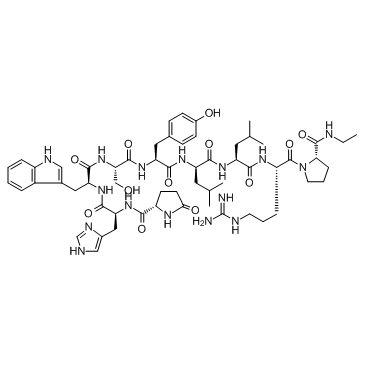| 结构式 | 名称/CAS号 | 全部文献 |
|---|---|---|
 |
亮丙瑞林
CAS:53714-56-0 |
|
 |
庚酸睾酮
CAS:315-37-7 |
| 结构式 | 名称/CAS号 | 全部文献 |
|---|---|---|
 |
亮丙瑞林
CAS:53714-56-0 |
|
 |
庚酸睾酮
CAS:315-37-7 |